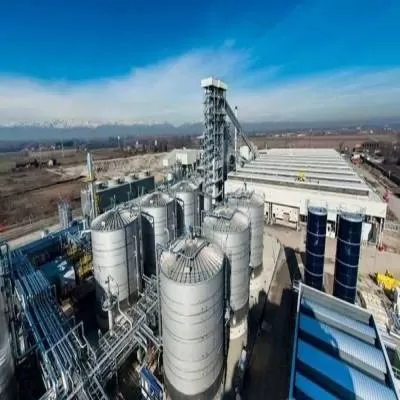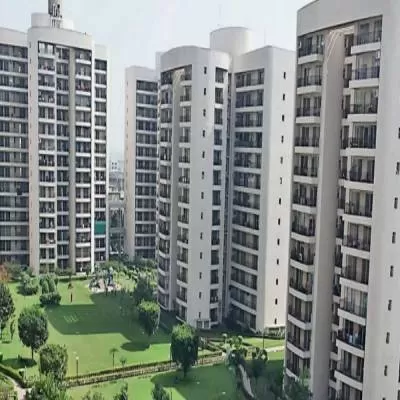- Home
- Real Estate
- Artificial Intelligence, the Internet of Things, Augmented Reality, Big Data
Artificial Intelligence, the Internet of Things, Augmented Reality, Big Data
Artificial Intelligence, the Internet of Things, Augmented Reality, Big Data are terms that we will hear more and more often. Technology has transformed almost every industry, including Real Estate. Today, all stakeholders in the real estate sector are embracing the onset of technology, using it to drive efficiencies during the lifecycle of a real estate project.Here are forms of technology that are currently being used to improve efficiency while performing the following functions:1. Development – construction and project management2. Distribution – sales, leasing and marketing3. Asset and facility managementDevelopment – construction and project managementAugmented Reality (AR) – This technology uses computer-generated images/models to visualize how the site/building will look like, upon completion. AR allows developers to make changes during the design phase, before construction begins, thereby reducing change orders that result in an increase in costs & timelines.Further, AR enabled gear available today allows project managers to collect data on the related to the plot of land being developed, such as the height, depth and width. This allows managers to plan procurement strategies accurately. In some countries, developers have been using AR to gauge the environmental and societal impact that the building will have on the surrounding area.Building Information Modeling (BIM) – BIM is a 3D model-based process which gives construction professionals an edge in planning, design and construction. Through BIM, architects, engineers and contractors collaborate in real time. It is a master model of sorts that is followed by all stakeholders of a project. A modification or change made in a BIM model by one stake holder (an architect for example) automatically updates the tasks/plans for all the stakeholders involved. BIM reduces the burden of co-ordination between multiple stakeholders, minimizes change orders & hence reduces costs and timelines, making the entire development process more efficient. Further, BIM can be used by owners and facilities management companies for future tracking once the project is complete.Drones and Unmanned Airborne Vehicles (UAV) - UAVs are being used extensively by contractors and project managers during the construction phase of projects. Progress is monitored in real time as accurate data is captured within minutes via photos and videos taken by the drones. The details of the various phases of construction are then communicated to the all stakeholders, making it easy to monitor the progress as-is. This increases the overall efficiency during the construction process.Modular Construction - This category of construction deals with modular buildings or prefabricated buildings that are constructed off-site (on another location) as per the same codes, standards, materials, and plant conditions. Modular construction takes less time than executing, on site -buildings are created in ' standardized modules' and then assembled on site. This kind of factory controlled construction allows for compact construction, generates lesser material waste, can be disassembled and reused, provides for numerous design prospects and safe construction, eliminates weather-related delays, reduces construction time, and enhances engineered building.Project Management Software (PMS) -There are numerous PMS’s available off the shelf that are used to aid construction management. The software is used to increase the efficiency, clarity and accountability of all stakeholders working on a project. It also assists in real-time communication between stakeholders and helps track other operations such as scheduling, costing and payments.3D Printing and Robotics - Also known as additive manufacturing, three-dimensional shapes are created by material layering using construction 3D printers (assisted via Computer Aided Design). Materials such as liquid or cement are used for this process. 3D printing can use multiple materials and colors. Dissolvable materials and subtraction of materials is also possible thereby reducing labor costs, time and waste. Robotic arms may be used in the construction industry in future to lay bricks leading to quicker turnaround time with higher precision.Distribution - Sales, Leasing & Marketing:-Virtual Reality (VR) - VR allows potential clients to visualize a property/apartment even before the project is completed. VR enables one to view the proposed interior (including rearranging furniture), floor plans and exterior design and architecture. This allows developers to sell projects/apartments even before a project is complete. For investors that invest across geographies, investment decisions can be taken without having to be present at the location.Chatbots - Marketing and sales performance can be enhanced via chatbots. Chatbots often serve as the point of interaction with a potential customer. For example, when a customer visits a website, a chatbot interacts and handles the straightforward questions posed by the customer. For example, marketing chatbots provide the standard information related to the project/property, along with images and videos without the customer having to search for themselves. Chatbots are always available. They assist in filling out contact forms, aid in getting in touch with a sales agent, and schedule visits when required. They reduce the overhead cost of the sales & marketing team over time and lead to higher conversion rates. Asset and Facility Management (Managing Homes and Offices): -Smart Homes and Offices – Offices & homes across the world are implementing/installing technologies that are driven by deep learning and artificial intelligence. Smart office & home gadgets provide comfort and improved security while being energy efficient. Lights, Security systems, appliances, air conditioning systems can all be controlled using a smart phone or tablet. Further, these appliances can be programmed to pick up usage patterns in the home and function automatically, creating a hassle-free experience.Robotics - Robots are increasingly being used to automate mundane activities, such as cleaning homes and common areas of buildings. One can change directions and control robots from anywhere via an app.In buildings, Robots are replacing receptionists & doormen. They are also being used for helpdesk related activities where feedback and complaints for building management can be submitted, collated and dealt with.Property Management Software - Property Management software is used to track the performance and downtime of building equipment, provide helpdesk support services and manage day to day tasks carried out by the maintenance teams. This software monitors the performance of the asset, ultimately making the entire property management process efficient. Some software also allows property & asset managers to keep track of rent and vacancy cycles.About the Author:Rushabh Vora is Co-Founder and Director at SILA.
























